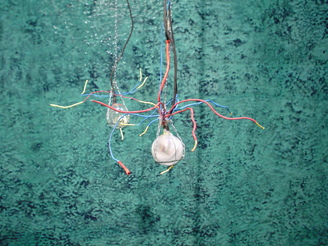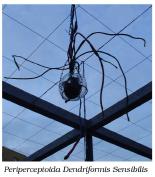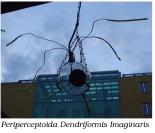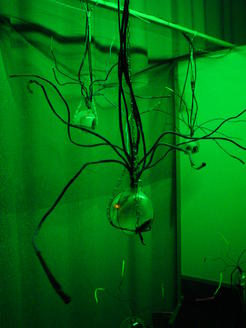Sonobotanics – Periperceptoidae Dendriformis
In collaboration with Alberto de Campo and Hannes Hoelzl.
Modelling the sonobotanic plants, Periperceptoida Dendriformis Sensibilis and Periperceptoida Dendriformis Imaginaris.

Sonobotanics is still a widely unknown science; it studies plants whose life experience is predominantly in the auditory domain. Since the 1970’s Dr. Hortensia Audactor has carried out the core research in this area. Despite difficulties encountered in the publication of her results, she has collected a substantial body of research about the growth patterns, communication behavior, and other characteristics of these plants.
Recently, the field of Predictive Sonobotanics has been founded, attempting to create models of the plants with the aim of predicting the behavior of sonobotanic plants and to gain a deeper understanding of the subtleties in sonobotanic plant behavior.
Periperceptoida Dendriformis Sensibilis
A sound plant whose precise classifying properties are to be found in the auditory domain. The stalk has a sound which is most similar to a woodwind instrument, whereas its leaves have a soft, rustling kind of sound. Its flowers sound like high pitched glass drops. Furthermore, the plant has a voice with which it reacts on perceived voices from other (e.g. human) beings.
Its physical appearance consists of a transparent ball, with long haulms (which are its sensing organs) in shades of blue and red with yellow ends.

Periperceptoida Dendriformis Imaginaris
A sound plant which is directly related to Periperceptoida Dendriformis Sensibilis. Its acoustic appearance is quite similar to P.D. Sensibilis, except that P.D. Imaginaris does not react to other voices. The outstanding characteristic of Imaginaris is that it is directly connected to one and only one other Sensibilis and that its sound emanations are exactly identical to the sound of this one specimen of Sensibilis. Interestingly, a Sensibilis and its connected Imaginaris cannot live in the same garden; they seem to require some distance between them. The physical appearance of P.D. Imaginaris is quite similar to that of Sensibilis, but with less and more slender haulms.

The Periperceptoidae can be further differentiated by their individual preferences for certain kinds of sounds. When their preferred sounds occur often in their environment, this has a positive influence on their growth and sense of well-being.

More information: